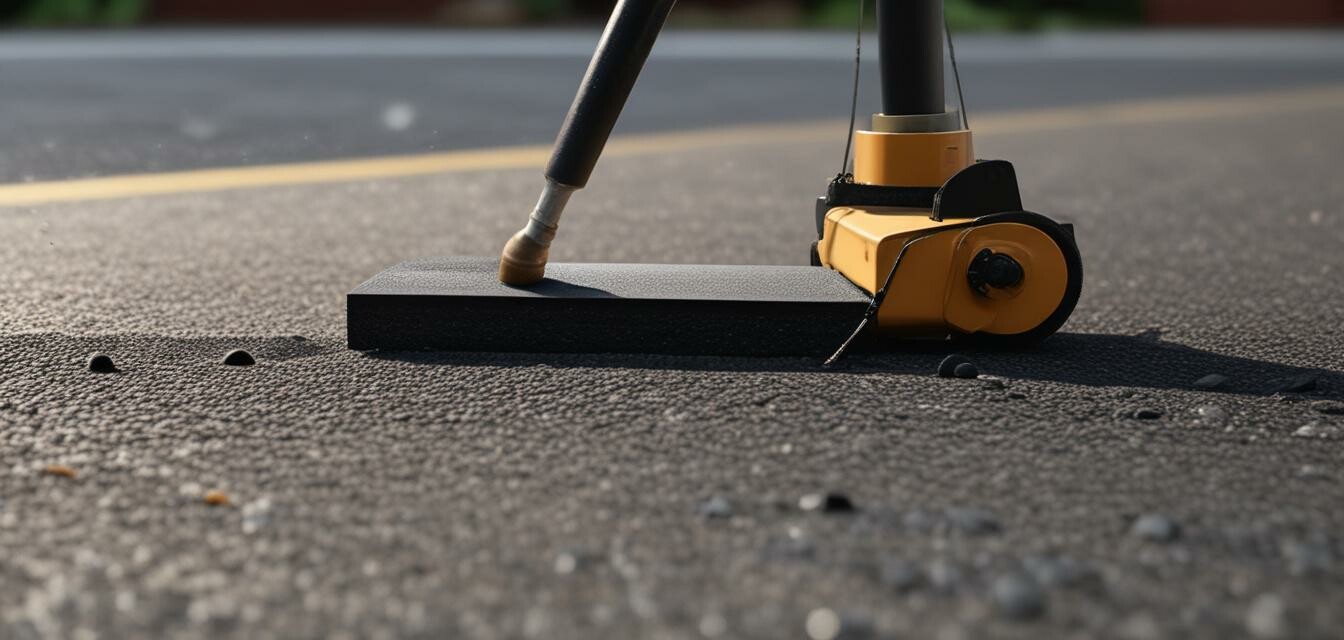
Conducting asphalt sampling: A how-to guide
Key Takeaways
- Understand the importance of asphalt sampling for quality control.
- Learn the steps to conduct effective asphalt sampling.
- Utilize the right tools and techniques to ensure accurate results.
- Follow safety protocols to protect yourself during the sampling process.
- Regular asphalt maintenance and quality checks can save costs in the long run.
Conducting asphalt sampling is an essential part of ensuring the quality and longevity of asphalt surfaces. Whether you are involved in a large paving project or maintaining a small driveway, understanding how to properly conduct asphalt sampling will enhance your project’s success. In this guide, we will walk you through the necessary steps, tools needed, and best practices for effective asphalt sampling.
Why conduct asphalt sampling?
Asphalt sampling is crucial for several reasons. Proper sampling allows contractors and property owners to:
- Inspect the quality of asphalt mixes before application.
- Test for compliance with standards and specifications.
- Identify possible problems early in the paving process.
- Ensure longevity and durability of asphalt surfaces.
Tools and equipment needed
Before beginning the asphalt sampling process, it's important to gather the right tools. Here’s a list of essential equipment:
| Tool | Purpose |
|---|---|
| Core drill | To extract asphalt samples. |
| Measuring tape | To measure sample depth and area. |
| Shovel | For surface preparation and sample collection. |
| Plastic containers | To store samples safely. |
| Personal protective equipment (PPE) | To ensure safety during the sampling process. |
Steps to conduct asphalt sampling
Here’s a step-by-step guide to effectively conduct asphalt sampling:
- Prepare the site: Ensure that the area is safe and devoid of obstacles. Clear the asphalt surface where the sample will be taken.
- Mark the sampling location: Use measuring tape to determine the best point for sampling. It's often recommended to sample from areas that show signs of distress.
- Use the core drill: Carefully operate the core drill at a steady pace to extract a cylindrical core sample. Aim for a sample depth of at least 3-4 inches.
- Extract the sample: Remove the core sample from the site, taking care not to damage it. Use a shovel to assist if necessary.
- Store the sample: Place the extracted asphalt sample into a plastic container and label it with date, location, and any other relevant information.
- Document the process: Record details about the sample, including the conditions of the pavement and any visible problems observed during sampling.
- Ensure safety: Always wear PPE such as gloves and safety goggles during the sampling process to avoid injuries.
Best practices for asphalt sampling
Implementing best practices during asphalt sampling can make a significant difference in the results:
- Choose sampling locations carefully to avoid areas with abnormal conditions.
- Regularly check and maintain your tools for accuracy and reliability.
- Follow proper safety protocols to minimize any risks involved.
- Consider conducting multiple samples for a more comprehensive understanding of asphalt quality.
Pros
- Enhances quality control of asphalt projects.
- Identifies potential problems early.
- Ensures adherence to specifications.
- Helps prolong the lifespan of the asphalt surface.
Cons
- Can be time-consuming.
- Requires specialized tools and training.
- Potential for incorrect sampling if not done properly.
Conclusion
In conclusion, conducting asphalt sampling is a critical activity that should not be overlooked. Through careful preparation, execution, and safety measures, you can ensure high-quality asphalt surfaces that meet all necessary standards. Regular sampling not only enhances your projects but also helps in preventing future costly repairs. For more information on asphalt paving and maintenance, check out our other resources on how-to guides and asphalt mixes and additives.
Tips for beginners
- Start with smaller projects to practice your sampling technique.
- Always work with a partner for safety and assistance during the sampling process.
- Observe professionals or take a course to learn the best techniques.

